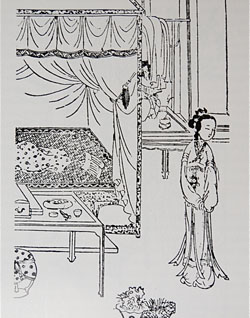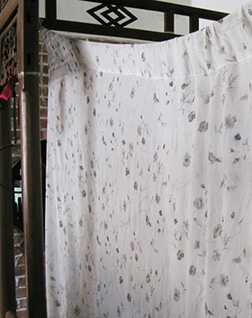| Literati bedrooms were small spaces, often hardly larger than a bed that itself was something like a room within a room. This was a place for sleep, mid-day rest and private reading. Aside from the gentleman whose room this was, only his closest friends or erotic companions would enter. The character of the bed would be defined by convention or personal choice. Its surface was firm but gently resilient, with - for instance - a covering of tight rattan over a network of taunt cords. The head would be held, poised on a firm pillow filled with dried aromatic leaves, the scent of which were slowly released as the leaves rubbed against one another for several years. Or one might use a fixed, wooden headrest. Awakening there, eyes slowing focusing, one might linger on the cloth that hung from the hardwood frame. If the matter was well-arranged, the cloth and bedding would follow the seasons, patterns recalling the cycle of plants, festivals and moods. | | 
 | 
 |